Call +(254) 703 030 000 / 751 483 999 / 721 704 777
- Home
- Power Transmission
- Bearings
- Plain Bearings
.....Read More
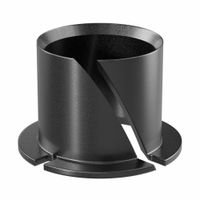
Clip Bearings
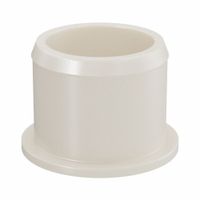
Dry-Run Plastic Flanged Sleeve Bearings

Dry-Run Plastic Sleeve Bearings
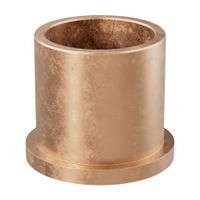
Lubricated Metallic Flanged Sleeve Bearings
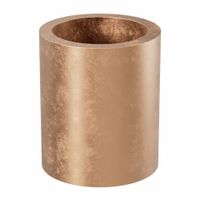
Lubricated Metallic Sleeve Bearings
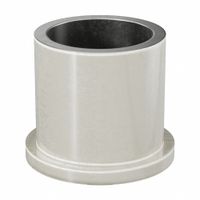
Maintenance-Free Metallic & Multi-Layered Flanged Sleeve Bearings

Maintenance-Free Metallic & Multi-Layered Sleeve Bearings
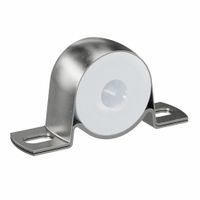
Mounted Plain Bearings
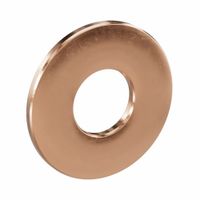
Thrust Washers
Frequently Asked Questions
What are plain bearings used for?
Plain bearings, also known as bushings, are used to reduce friction between two surfaces sliding against each other. They are essential components in various mechanical systems and are employed in numerous applications due to their simplicity, reliability, and cost-effectiveness.
1. **Automotive Industry**: Plain bearings are used in engines, transmissions, and suspension systems to support rotating shafts and reduce friction between moving parts. They help in improving fuel efficiency and reducing wear and tear.
2. **Aerospace**: In aircraft, plain bearings are used in landing gear, flight control systems, and engines. They are chosen for their ability to withstand high loads and harsh environmental conditions.
3. **Industrial Machinery**: These bearings are found in pumps, compressors, and conveyor systems. They provide smooth operation and are capable of handling heavy loads and high speeds.
4. **Construction Equipment**: In heavy machinery like excavators and bulldozers, plain bearings are used in joints and pivots to allow for smooth movement and to handle heavy loads.
5. **Marine Applications**: Plain bearings are used in ship propellers and rudder systems due to their resistance to corrosion and ability to function in wet environments.
6. **Electrical Appliances**: In household appliances like washing machines and fans, plain bearings are used to ensure quiet and efficient operation.
7. **Railways**: They are used in train wheel assemblies and suspension systems to provide stability and reduce maintenance needs.
8. **Renewable Energy**: In wind turbines, plain bearings are used in the pitch and yaw systems to adjust the blades and direction of the turbine.
Overall, plain bearings are chosen for their durability, ability to operate without lubrication in some cases, and their capacity to handle a wide range of loads and speeds.
How do plain bearings differ from ball bearings?
Plain bearings and ball bearings are both types of bearings used to reduce friction between moving parts, but they differ in design, operation, and applications.
Plain bearings, also known as sleeve or journal bearings, consist of a simple surface that supports the shaft. They operate on the principle of sliding motion, where the shaft slides over the bearing surface. These bearings are typically made from materials like bronze, plastic, or composite materials that provide low friction and good wear resistance. Plain bearings are generally used in applications where loads are moderate, speeds are low, and there is a need for simplicity and cost-effectiveness. They are often found in automotive engines, turbines, and heavy machinery.
Ball bearings, on the other hand, use balls to maintain the separation between the bearing races. The balls reduce friction by rolling, rather than sliding, which allows for smoother motion and higher efficiency. Ball bearings are designed to handle both radial and axial loads, making them versatile for various applications. They are commonly used in applications requiring high-speed rotation and precision, such as in electric motors, hard drives, and aerospace components. Ball bearings are typically made from steel or ceramic materials for durability and performance.
In summary, the primary difference lies in their operation: plain bearings rely on sliding motion, while ball bearings use rolling motion. This fundamental difference affects their load capacity, speed capability, and application suitability. Plain bearings are simpler and more cost-effective for low-speed, moderate-load applications, whereas ball bearings are preferred for high-speed, precision applications due to their ability to handle higher loads and reduce friction more effectively.
What materials are plain bearings made from?
Plain bearings are typically made from a variety of materials, each chosen for specific properties that suit different applications. Common materials include:
1. **Bronze**: Known for its durability and resistance to wear, bronze is often used in plain bearings for heavy-duty applications. It can be alloyed with other metals like tin, aluminum, or lead to enhance its properties.
2. **Babbitt**: This is a soft, white metal alloy composed mainly of tin, lead, copper, and antimony. Babbitt is used as a lining material for bearings due to its excellent conformability and embeddability, which help in accommodating shaft misalignments and trapping debris.
3. **Brass**: Similar to bronze, brass is an alloy of copper and zinc. It is used in applications where moderate loads and speeds are involved, offering good corrosion resistance and machinability.
4. **Steel**: Often used as a backing material, steel provides strength and rigidity. It is usually combined with a softer bearing material like Babbitt or bronze to form a composite bearing.
5. **Plastic**: Materials like PTFE (Teflon), nylon, and UHMWPE are used for their low friction, corrosion resistance, and ability to operate without lubrication. They are suitable for light to moderate loads and speeds.
6. **Ceramics**: Used in high-temperature and high-speed applications, ceramic materials offer excellent wear resistance and can operate without lubrication.
7. **Graphite**: Often used in high-temperature applications, graphite bearings can operate without lubrication and offer good thermal conductivity.
8. **Composite Materials**: These include combinations of fibers (like glass or carbon) and resins, providing a balance of strength, low friction, and resistance to wear and corrosion.
Each material is selected based on factors like load capacity, speed, temperature, lubrication requirements, and environmental conditions.
How do you install a plain bearing?
1. **Preparation**: Ensure the bearing and housing are clean and free from debris. Inspect for any damage or wear.
2. **Check Fit**: Verify the bearing's dimensions match the housing and shaft specifications. Ensure proper clearance or interference fit as required.
3. **Lubrication**: Apply a thin layer of appropriate lubricant to the bearing surface to reduce friction during installation.
4. **Alignment**: Align the bearing with the housing or shaft. Misalignment can cause uneven wear or damage.
5. **Press Fit**: If the bearing requires a press fit, use a press tool or arbor press. Apply even pressure to avoid tilting or damaging the bearing. Do not hammer directly on the bearing.
6. **Thermal Expansion**: For tight fits, consider heating the housing or cooling the bearing to facilitate installation. Use an oven or induction heater for heating, and dry ice or a freezer for cooling.
7. **Insertion**: Gently insert the bearing into the housing or onto the shaft. Ensure it is seated properly without any gaps.
8. **Securing**: If necessary, secure the bearing with retaining rings, set screws, or adhesive to prevent movement during operation.
9. **Final Inspection**: Check the alignment and fit. Ensure the bearing rotates smoothly without binding.
10. **Testing**: Run the assembly at low speed to ensure proper installation and function before full operation.
11. **Documentation**: Record the installation details, including date, method, and any observations for future reference.
What are the advantages of using dry-run plastic sleeve bearings?
Dry-run plastic sleeve bearings offer several advantages:
1. **Maintenance-Free Operation**: These bearings do not require lubrication, eliminating the need for regular maintenance and reducing downtime.
2. **Cost-Effective**: The absence of lubrication systems and reduced maintenance needs lower operational costs. Additionally, plastic materials are generally less expensive than metals.
3. **Corrosion Resistance**: Plastic bearings are resistant to corrosion, making them suitable for use in harsh environments where metal bearings might degrade.
4. **Lightweight**: Plastic materials are lighter than metals, which can contribute to overall weight reduction in machinery and equipment.
5. **Low Friction**: Many plastic bearings are designed to have low friction coefficients, which can improve efficiency and reduce energy consumption.
6. **Noise Reduction**: Plastic bearings typically operate more quietly than metal bearings, which is beneficial in applications where noise reduction is important.
7. **Chemical Resistance**: They are resistant to a wide range of chemicals, allowing them to be used in environments where exposure to chemicals is a concern.
8. **Vibration Damping**: Plastic materials can absorb vibrations better than metals, which can enhance the performance and longevity of machinery.
9. **Self-Lubricating**: Many plastic bearings are made from materials that have inherent self-lubricating properties, further reducing the need for external lubrication.
10. **Versatility**: Available in various shapes and sizes, plastic bearings can be customized to fit specific application needs.
11. **Environmental Benefits**: The elimination of lubricants reduces environmental contamination and disposal issues associated with oil and grease.
12. **Temperature Tolerance**: Certain engineered plastics can withstand a wide range of temperatures, making them suitable for diverse applications.
These advantages make dry-run plastic sleeve bearings an attractive option for many industrial and commercial applications.
How do you maintain lubricated metallic sleeve bearings?
To maintain lubricated metallic sleeve bearings, follow these steps:
1. **Regular Inspection**: Frequently inspect bearings for signs of wear, corrosion, or damage. Check for unusual noises or vibrations during operation.
2. **Proper Lubrication**: Use the correct type and amount of lubricant as specified by the manufacturer. Over-lubrication can cause overheating, while under-lubrication can lead to increased friction and wear.
3. **Lubricant Quality**: Ensure the lubricant is clean and free from contaminants. Replace it at regular intervals to maintain its effectiveness.
4. **Temperature Monitoring**: Keep an eye on operating temperatures. Excessive heat can degrade the lubricant and damage the bearing. Use temperature sensors if necessary.
5. **Alignment Checks**: Ensure the shaft and bearing are properly aligned. Misalignment can cause uneven wear and reduce bearing life.
6. **Load Management**: Avoid overloading the bearing beyond its rated capacity. Excessive load can lead to premature failure.
7. **Seal Integrity**: Inspect and maintain seals to prevent contaminants from entering the bearing. Replace damaged seals promptly.
8. **Vibration Analysis**: Conduct regular vibration analysis to detect early signs of bearing failure. This can help in planning maintenance before a breakdown occurs.
9. **Cleaning**: Keep the bearing and surrounding area clean. Remove any debris or dirt that could enter the bearing housing.
10. **Documentation**: Maintain detailed records of maintenance activities, inspections, and any issues encountered. This helps in tracking the bearing's performance over time.
By adhering to these practices, you can extend the life of metallic sleeve bearings and ensure efficient operation.
What is the purpose of a flanged sleeve bearing?
A flanged sleeve bearing is designed to support and guide rotating or sliding shafts, reducing friction and wear between moving parts. The flange, an extended rim or lip on one end of the bearing, serves multiple purposes. It helps in positioning the bearing within a housing or assembly, preventing axial movement and ensuring proper alignment. This feature is particularly useful in applications where axial loads are present, as it provides a surface for axial load distribution, enhancing stability and performance.
The sleeve, or cylindrical portion of the bearing, provides a smooth surface for the shaft to rotate or slide against, minimizing friction and wear. This is crucial in maintaining the efficiency and longevity of machinery by reducing energy loss and preventing damage to components. Flanged sleeve bearings are typically made from materials like bronze, plastic, or composite materials, chosen for their low friction properties and ability to withstand various environmental conditions.
In summary, the primary purpose of a flanged sleeve bearing is to support and guide shafts while reducing friction and wear, with the flange providing additional stability and alignment in applications with axial loads.